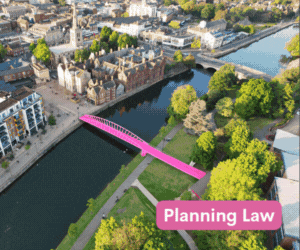LGA broadly supports proposed biodiversity net gain reforms
The Local Government Association (LGA) has largely supported plans to streamline parts of the Biodiversity Net Gain (BNG) requirements for minor, medium, and brownfield developments in its response to the Government's consultation on proposed changes.
- Details
Defra launched the consultation in May, setting out proposals to implement biodiversity net gain (BNG) for small development, medium development and brownfield development.
The department also ran a separate consultation in parallel asking for views on the implementation of biodiversity net gain in nationally significant infrastructure projects.
Introduced under the Environment Act 2021, BNG requirements are designed to ensure that a development has a measurably positive impact ('net gain') on biodiversity, compared to what was there before development.
Since February 2024, most major developments have been subject to the requirements, with minor development following in April 2024.
The consultation – which closed last month – reported that early information suggests BNG implementation has been "broadly successful".
However, it proposed the following changes:
- reform of existing exemptions and introduction of new exemptions
- streamlining the small sites metric and considering whether this could apply to medium development
- relaxation of the biodiversity gain hierarchy and disapplication or amendment to the spatial risk multiplier for minor development
- delivery of compensation for development on brownfield sites with open mosaic habitat, applicable to all development categories
In its response to the consultations, the LGA welcomed the Government's confirmed commitment to BNG and that the department has no plans for significant reform or repeal of the legislation.
However, it said BNG has been a "steep learning curve" for all involved, adding that "clarity" is needed about the future "so local planning authorities can focus on delivery rather than responding to mixed messages and rumours".
The LGA said implementation had been “challenging for smaller sites” and that extending the “de minimis” exemption could help.
“Feedback from councils suggests that an area threshold of 50 square metres would be supported by many, although individual councils will have different views,” it added.
It noted that BNG had been “helpful” for local planning authorities in urban areas in retaining mature trees, since the removal of a mature tree requires a developer to provide “an equivalent amount of biodiversity plus uplift”.
The LGA said it “would welcome engagement with government on flexibilities that would enable BNG on small sites to support local, council-led tree planting programmes”. Potential solutions could include “creating local habitat banks and using BNG alongside other tools such as Section 106 agreements”.
It rejected a full exemption for all minor development, warning: “This reduces the environmental benefits of BNG, and with time and support SME developers will gain confidence and experience in the BNG process.”
On the proposal to create new exemptions for certain types of development, for example temporary development, the LGA cautioned that “they will create issues with interpretation and definitions”. While recognising the challenges the department was seeking to address, “there may be other solutions or work arounds that do not require changes to BNG processes”.
Turning to the biodiversity metric, the LGA said it “will need to evolve over time” and that Defra and Natural England should co-design changes to the metric with stakeholders including local government.
Addressing flexibility to deliver off-site gains for minor development, it said: “We recognise that access to the BNG market has been a challenge for small sites, but this is not a reason to relax the hierarchy that promotes on-site BNG as the best option.”
It suggested giving local authorities flexibility to operate a local tariff or credit system, making it easier for developers to provide fractional units.
On the separate consultation on nationally significant infrastructure projects (NSIPs), the LGA described the introduction of BNG from May 2026 as “a real opportunity to support nature through infrastructure development”.
However, it opposed a proposed change to the statutory biodiversity metric that would allow NSIPs to deliver gains in any of the local planning authorities the scheme is in without incurring a spatial risk multiplier penalty.
The Office for Environmental Protection (OEP) meanwhile urged Defra to proceed “with caution” in its own response to the reforms.
The environmental watchdog criticised the consultation for lacking “any detailed evidence regarding the nature and extent of the challenges that the proposals are intended to address,” and warned that, “as a consequence, the basis for which Government is making these particular proposals is not clear from the consultation”.
The OEP also expressed concern that the proposal to exempt minor development would “significantly narrow the scope” of biodiversity net gain and could adversely impact the emerging biodiversity unit market.
Adam Carey
Senior Lawyer - Contracts & Commercial
Lawyer - Property
Contracts & Procurement Lawyer
Trust Solicitor (Employment & Contract Law)
Locums
Poll









































